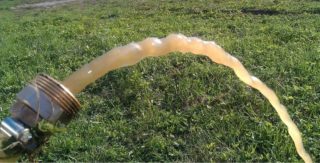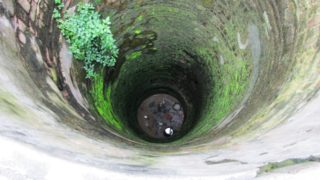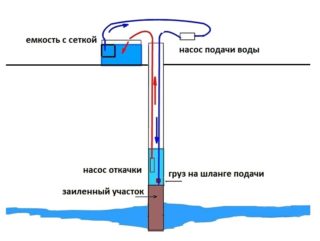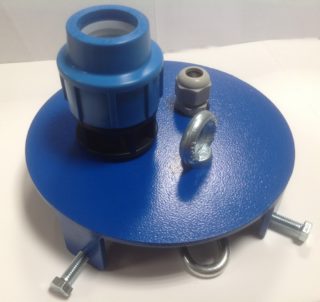For the device of autonomous water supply in a suburban area, wells or wells are mounted. More often the sources work smoothly without any complaints. However, there are times when muddy water with clay comes from the wells. This phenomenon indicates a problem in the casing or changes in the resource horizon. The problem must be eliminated as soon as possible, otherwise the performance of the hydraulic structure will drop completely.
Causes of cloudy water

The causes of dirty water from a well in spring or at other times of the year can be both mechanical factors and biological, chemical phenomena. It is necessary to eliminate the problem only after the provoking factor has been identified.
Mechanical reasons
It can be:
- Rupture of the filter mesh and, as a consequence, the ingress of sand into the casing. This is especially true for sources on the sand bed.
- Casing rupture. It occurs against the background of the mobility of the horizons. Those, in turn, are displaced due to improper actions of the drillers - incorrectly selected and installed pipes. With such violations of the integrity of the column, the liquid from the upper water can ooze along with the sand into the artesian well. If a rupture occurs in the lower part of an artesian hydraulic structure, the water may be white due to the large amount of lime in it.
- Strong washout of the gravel bed. Occurs when the bottom of the casing is covered with a layer of gravel as filter material. It is designed to block the flow of lime and sand particles into the water. When the gravel bed is washed out, these elements freely fill the casing space and make the resource dirty.
- Column destruction by a vibration pump. For narrow wells, it is better to use centrifugal or screw equipment. Vibrating units with constant contact with the walls of the casing lead to mechanical damage. To prevent this from happening, a tight rubberized ring is put on the pump flask.
Depressurization of the barrel in any part of it also leads to contamination of the fluid in the source. Here, groundwater after rain, industrial wastewater, etc. can freely enter the well.
Hydrogeological reasons
If clay particles are present in the aquatic environment, most likely we are talking about quicksand. This is one of the layers of soil, oversaturated with moisture. Inexperienced drillers may confuse it with an aquifer and misplace the casing. Professionals know that working on quicksand is difficult. It is prohibited to use such liquid for household needs.
Chemical causes
More often, the high concentration of ferric / ferrous iron in it or the ingress of various industrial chemicals into the formation affects the purity of water from a well. The second happens at times less often. If the contamination of the liquid is due to iron, the water will have an unpleasant reddish tint. This happens either due to the presence of Fe3 in the liquid, or due to the oxidation of Fe2 by air on the surface and its transformation into a trivalent form. When an aqueous medium with a large amount of iron settles, its visible particles settle to the bottom of the container. They can be removed by filtering.
Biological causes of pollution

We are talking about biological contamination of a liquid or the presence of organic matter (algae) in it. In the first case, nitrates, acids, and other biological pollutants leaked into the mine together with groundwater or atmospheric precipitation. You can drink the extracted resource only after boiling. The raw liquid will at least provoke intestinal upset.
As for organic matter, microorganisms (algae) grow and bloom more often in the wells. The reason is a simple source and hot sun rays hitting it. Heated standing water is an excellent environment for living microorganisms. With organic activity, the liquid from the source will have the characteristic swamp smell.
Cleaning methods

Liquid purification options are based on its mechanical filtration and disinfection. But first you need to eliminate the very reason for the contamination of the well.
It is advisable to replace the damaged filter (its mesh) with a disc cleaner. It is able to filter volumes of moisture from suspended solids with a particle size of 20 microns and above. Moreover, its wear resistance is better than that of a conventional mesh.
If the cause of turbidity is siltation, you will have to shake the well and flush it under high pressure. It is better to entrust such work to professionals. They have everything you need to do the swing. Flushing is done by pumping out the entire volume of water using a powerful pump and pouring reagents into the mine under high pressure. If you do such work yourself, there is a high risk of damaging the string with water hammer. After swinging, it is advisable to change the silted bottom filter.
In case of biological and organic contamination of the well resource, it is important to filter the water and decontaminate it. Comprehensive cleaning is needed here. It is advisable to use special biological filters. For disinfection, use a 1% chlorine solution and other similar chemicals. If the source mine is not cleaned of organic matter, then all the efforts of the decontamination master will be in vain. The flowering and reproduction of microorganisms will become more intense every day.
To purify liquids with organic matter or biological impurities, it is best to use reverse osmosis units.
If the water has a high concentration of iron, it is possible to install deironing filters or to carry out first forced aeration of the liquid, and then its mechanical filtration. The simplest, but laborious and time-consuming method is the settling of the reserves accumulated in the reservoir.
In case of mechanical damage to the casing, it is important to correct all the shortcomings, to achieve complete sealing of the string. This can be done after the water has been completely pumped out.
If a part of the pipe has moved relative to its axis, it will no longer be possible to correct the situation. Drilling of a new source is required.
Preventive measures

To prevent turbidity of well water, a number of preventive measures must be taken:
- At the stage of preliminary drilling, accurately determine the depth of the location of the aquifer, its type. Based on the data obtained, select the optimal casing diameter, the type of coarse and fine filter. Here, it is advisable to carry out a complete analysis of the liquid in order to understand what tasks for its purification will have to be faced.
- Operate the source continuously. Long seasonal downtime leads to silting of the bottom of the column. As a result, the productivity of the hydraulic structure is reduced. The water in it becomes cloudy with an admixture of sand and organic matter.
- Equip the source with a cap that will protect the upper part of the well from sunlight.
It is also advisable to flush the shaft of the mine at least once every 2-3 years in order to remove possible impurities of sand or clay from it, and to increase the flow rate.








